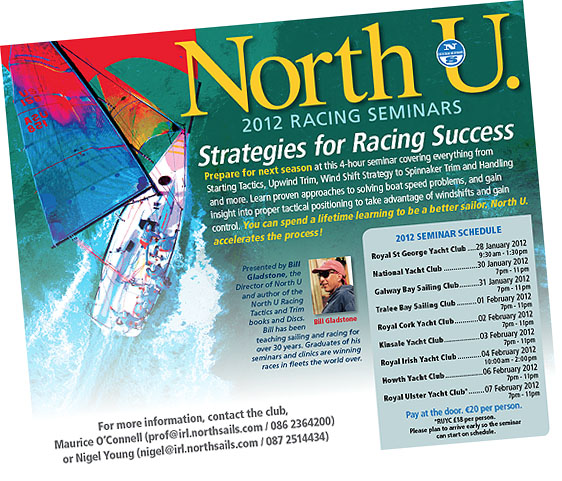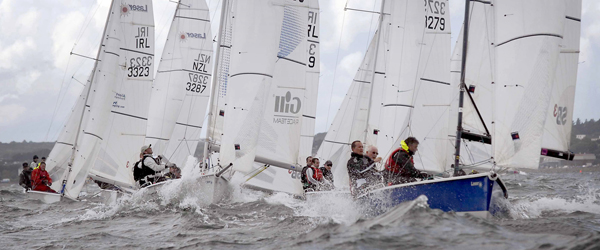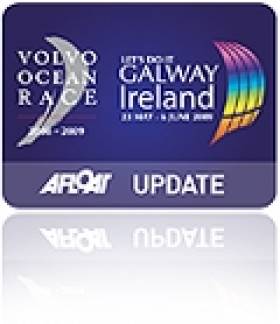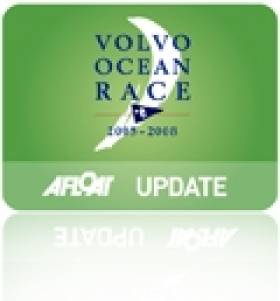Displaying items by tag: Galway Bay Sailing Club
#VOLVO OCEAN RACE - Dave Vinell spoke to the Galway Independent recently about his longtime love of the sea ahead of the upcoming Volvo Ocean Race finale in Galway.
The Commodore of the Galway Bay Sailing Club, who grew up in Essex, tells how he began in kayaking but soon moved in to sailing a one-man Laser dinghy.
“Since that, I am on my tenth boat, the same type as the one I started sailing 45 years ago," he says. "I can’t seem to get away from it!”
Even today he still races his Laser, juggling his competitions with his duties as Commodore - and his responsibilities overseeing the on-water activities for the Volvo Ocean Race finale in Galway Bay.
Aside from looking after the main racing events, the Irish Sailing Association (ISA) regional race officer and national judge will also be helping to get 10,000 youngsters on the water during the week's festivities.
The Galway Independent has more on the story HERE.
Multihulls Head for Galway Bay Championships
#vor – 40 catamarans will be raced by two handed teams in front of the promenade in Salthill, Galway on Saturday, June 30th and Sunday July 1st as they compete in the Irish Multihull Association (IMA) National regatta sponsored by local taxi company Pro-Cabs.
Only once every 5 years is this competition hosted in the West of Ireland and for 2012, in association with the Volvo Ocean Race Grand Finale Festival, Galway Bay Sailing Club is the genial host.
The catamaran, a multihulled sailing craft - typically two hulls linked together by a taught trampoline, has its roots in cultures and traditions as old as the early Polynesian settlers who used them to reach far-flung islands.
Today these cats have evolved to become specialist speed machines on the water, ranging from the popular "everyday" 16 and 18 foot length boats to the 45 and future 72 foot competitors of the Americas Cup. Trading under names like Wildcat, Tiger, Hurricane and Tornado, you can just imagine all that these sensational boats can do. Flying their colourful, billowing spinnakers (balloon-like sail) off 30 foot high masts, they are sleek and graceful, most manoeuvrable and lend the ability to be sailed close to the edge at terrific speeds.
The edge being that point before everything can come tumbling down in a spectacular capsize. Of all the various cat types sailing on June 30th, the largest fleet will be the Dart 16s. All locally owned boats, they are famed for their yellow hulls and while not as fast, they are much more robust and can take on stronger winds than their delicate fibreglass constructed 18 foot cousins.
Right now, besides the 40 or so local cat sailors, there are another 40 all over the country, from Cork to Antrim, and even as far as England, fine tuning their skills and rigs to put on a display not seen so close to the shore in Galway before.
Expect to see the 25 knot thrills and maybe even some spectacular spills of catamaran racing up-close. The first of four races blasts off at 12.00 on Saturday, starting with 3 windward-leewards, The Cardpoint, The Coffey Construction and The Nevins Pharmacy, finishing with The Coach House Coastal. Sunday features The Avon Ri Hobie Centre and The Bow Waves windward-leeward races followed by The McSwiggans Coastal.
If you like what you see from Salthill promenade Sat 30th – Sun 1st and you think you might like to try it out, then contact GBSC (www.gbsc.ie / 091-794527) or your own local sailing club for more information, or contact the IMA (www.multihull.ie / [email protected] ) who will try to put you in touch with the nearest club to you.
Fair or formidable weather, these cats and their sailors will put on a fast and colourful display of skill and speed at the Pro-Cabs IMA Nationals 2012 on the wet and wonderful Galway Bay!
North Sails Ireland Start Nationwide Seminar Tour
#NORTH SAILS SEMINAR – US Sailmaker Bill Gladstone of North Sails returns to these shores for a nine stop lecture tour of Ireland starting this Saturday at the country's biggest club, the Royal St George YC in Dun Laoghaire. Gladstone was last here in 2009 and the series proved popular. From Dun Laoghaire the North Sails seminar heads West to Galway Bay. The full schedule is below.

Gladstone has been teaching sailing and racing for over 30 years. Topics this week, for the €20 pay at the door event, include starting tactics, upwind trim, wind shift Strategy to spinnaker trim and handling.
For more information, contact the club, Maurice O'Connell ([email protected] / 086 2364200) or Nigel Young ([email protected] / 087 2514434)
2012 SEMINAR SCHEDULE
Royal St George Yacht Club.....28 January 2012
9:30 am - 1:30 pm
National Yacht Club..................30 January 2012
7 pm - 11 pm
Galway Bay Sailing Club...........31 January 2012
7 pm - 11 pm
Tralee Bay Sailing Club...........01 February 2012
7pm - 11pm
Royal Cork Yacht Club.............02 February 2012
7pm - 11pm
Kinsale Yacht Club...................03 February 2012
7pm - 11pm
Royal Irish Yacht Club.............04 February 2012
10:00 am - 2:00 pm
Howth Yacht Club....................06 February 2012
7pm - 11pm
Royal Ulster Yacht Club*......... 07 February 2012
7pm - 11pm
Pay at the door. €20 per person. *RUYC £18 per person.
Galway J109 Crew are Superleague Performers
Glen Cahill and the crew of the J109 Joie de Vie from Galway Bay Sailing Club were crowned overall winners of the West Coast Super League 2010 in both IRC & Echo at the prize giving held last Saturday night at Foynes Yacht Club.
The Murphy Marine Services sponsored league was an extracted series of seven events on the West Coast of Ireland and is organised by the West of Ireland Offshore Racing Association with the help from various clubs involved which where Galway Bay Sailing Club, Tralee Bay Sailing Club, Clifden Boat Club, Foynes Yacht Club and the Royal Western Yacht Club of Ireland.

Simon Mc Gibney (WIORA Commodore) Glen Cahill, Jennifer Cuddy, Chris Law, Bobbi O Regan (WIORA) Bernard McCarthy. More prizegiving photos below
The events where the Tralee Bay Sailing Club Regatta, West Coast Championships hosted by the Royal Western Yacht Club, O'Sullivan Marine 100 Mile Race, Clifden Boat Club Regatta, Galway Bay Sailing Club Regatta, Northwestern Offshore Racing Association Regatta hosted by Galway Bay Sailing Club and Foynes Yacht Club Regatta.
In excess of sixty boats took part in the various events during the League and the final placing where not decided until the Foynes Yacht Club Regatta was completed.
Joie de Vie had a very impressive season wining Class 1 in no less than four of the seven events including the West Coast Championships and fought off stiff competition from Raymond McGibney's Dehler 34 Disaray from Foynes Yacht Club, who finished overall runner up in both IRC & Echo and Liam Burke's Corby 33 AWOL from Galway Bay Sailing Club who collected the most competed events WIORA Trophy and Rob Allen's Corby 36 Mustang Sally from the Royal Western Yacht Club of Ireland.
Results after all seven events completed -
Overall IRC & ECHO
Overall IRC & ECHO Winner – Glen Cahill's J109 Joie de Vie Galway Bay Sailing Club
Overall IRC & ECHO Runner up - Raymond Mc Gibney Dehler 34 Disaray Foynes Yacht Club
Class Prize & The most competed events WIORA Trophy
Liam Burke's Corby 33 AWOL Galway Bay Sailing Club
Class Prize
Rob Allen Corby 36 Mustang Sally Royal Western Yacht Club of Ireland

Awol: Bobbi O Regan (WIORA) Nigel Thornton, Noreen Mc Carthy, Simon Mc Gibney (WIORA Commodore)

Disaray Crew: Simon Mc Gibney (WIORA Commodore) Edward Enright, Fionn Mc Gibney, Louise Barrett, Rory Mc Gibney, Bobbi O Regan (WIORA) Raymond Mc Gibney

Mustang Sally: Simon Mc Gibney (WIORA Commodore), Rob Allen, Bobbi O Regan (WIORA)
Galway Bay Event Sets Scene for Nationals decider
With breeze on at nearly every round this year the battle for honours at the front of the SB3 fleet has been compared to a tennis match between McCready Gill Racing and Sharkbait.
The opening salvo of the year took place at the Easterns, hosted by the Royal St George in May,
Galway Bay Sailing Club hosted the latest instalment of this epic battle, the SB3 Ireland Western Championships, over the weekend. The legacy of the city being host to the 2008 Volvo stopover means that, with the addition of a few further basic amenities, Galway is now a first class championship venue. The fleet were hosted by Galway Harbour Company in the docks and clear water out to the west meant the course had superb wave conditions to go with the 20-25kts of breeze. Ideal conditions for ripping it up in an SB3. But for a single 30kt squal the breeze barely wavered all weekend putting boatspeed, technique and fleet management skills to the fore.
Dave Quinn and the crew of Investwise have been in increasly fine form at HYC so it was no surprise to see them storm off the line to round the first windward mark in the lead. Sharkbait looked to follow them but badly misread the tide and had to eject out below the windward mark eventually rounding 6th with McCready Gill Racing in 4th. The first helterskelter run of the weekend followed with the entire fleet powering down the run under A-sails at the bottom of which Sharkbait pulled through the last couple of boats to take the lead on the drop. From there they eased away to a comanding lead whilst back in 3rd McCreadys spun out at the final gate (caught on camera for the entertainment of the masses in the bar that evening) and went wide of the gate. Once they realised their error they retired from the race leaving Investwise a comfortable 2nd with Lia in third followed by Belfast Kitchens and Duff Beer in 4th and 5th.
In the second race the trio including Loch Derg stalwarts Geoff O'Donoghue and Michael McCarney launched out of the left and into an early lead closely followed by Ronan Downing in Profile Park. But the pack slowly hunted them down with Sharkbait taking their second win, followed by the McCreadys. Profle Park held on for 3rd followed by Belfast Kitchens and Lia.
In the third and final race of the first day Sharkbait jumped clear off the first line with a significant bias to take up a controlling position. Marking the fleet most of the race they let slip at the top half to let Peter Kennedy through. PK, Tom Molloy and Peter Mackel on Belfast Kitchens sailed up the beat to round first with inches to spare. Down the run the McCreadys belted out to the left hand side of the run while the two leaders headed off neck and neck down the right. Belfast Kitchens held their own with Sharkbait down the run leaving a frantic pressure drop from both boats at the leeward gate. Bow vs bow to get the kites down and under control it was honours even as Sharkbait closed to within inches of Belfast Kitchen's stern before being ready to tack off. Both boats crossed tacks half way up the final beat with Belfast Kitchens having extended to a 2 boatlength lead. Both teams worked their boats for all they were worth and the finish was greated with celebration on the Northern Irish boat as they took the pin end line bias for a win by feet to serve notice that they will be there to defend their National title come September. Discount them at your peril. McCready Gill Racing came 3rd with Sean Craig, Stephen Boyle and Alan Green in Yeti making their first appearance at the front of the fleet this year from Profile Park.
With the lock gates firmly closed until 1pm on Sunday full advantage was taken of the Captains Morgans sponsorship at McSwiggans Bar in the evening. As the poster said 'we're off the edge of the map now lads, here be monsters!'.
On Sunday afternoon a steady 18-20kts westerly welcomed the competitors back to the race course. Despite enjoying all that Galway has to offer for the evening Dave Barry wiggled Lia up the first beat to round first, followed by Sharkbait and McCready Gill Racing. All the Lake Garda practice paid off when their kite went up with a wrap. they gybed off smartly undoing the wrap and holding 3rd to the end of the race. Sharkbait powered away to an early lead down the run with the McCreadys' hot on their heels and an early drop closed the race right back up again. Patrolling the middle of the course up the second beat Sharkbait took a 10 boatlength lead into the final run which they extended to 15 boat lengths before wiping out in the final gybe of the race. All the advice on broach recovery came in handy and but by the time the kite was back up the mast McCready Gill Racing where hot on their heels. Perfect drops from both boats at the gate and a game of tack and cover to the line saw the Howth team home for their 3rd bullet sewing up the event. Game Sharkbait.
In the 5th and final race McCready Gill Racing tidied up 2nd place overall with a race win from Dinghy Supplies, Monkey, Duff Beer and Yeti.
Photograph below by Olivier Bauduin

































































